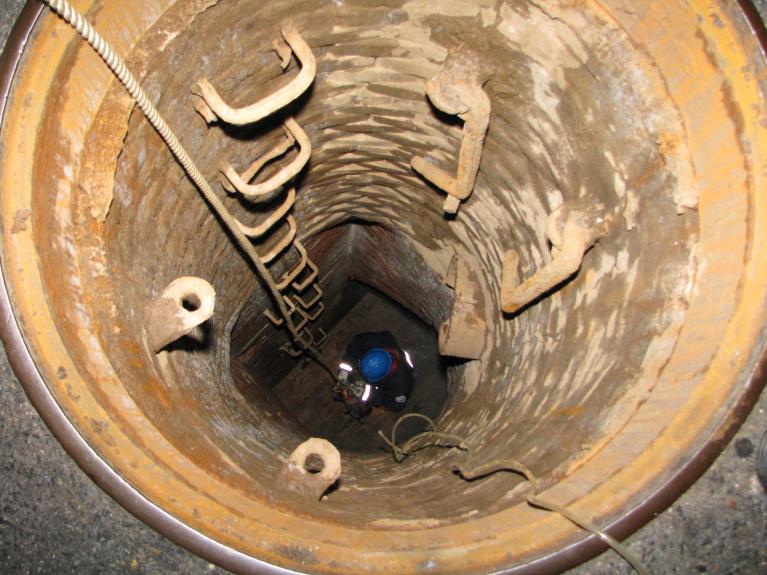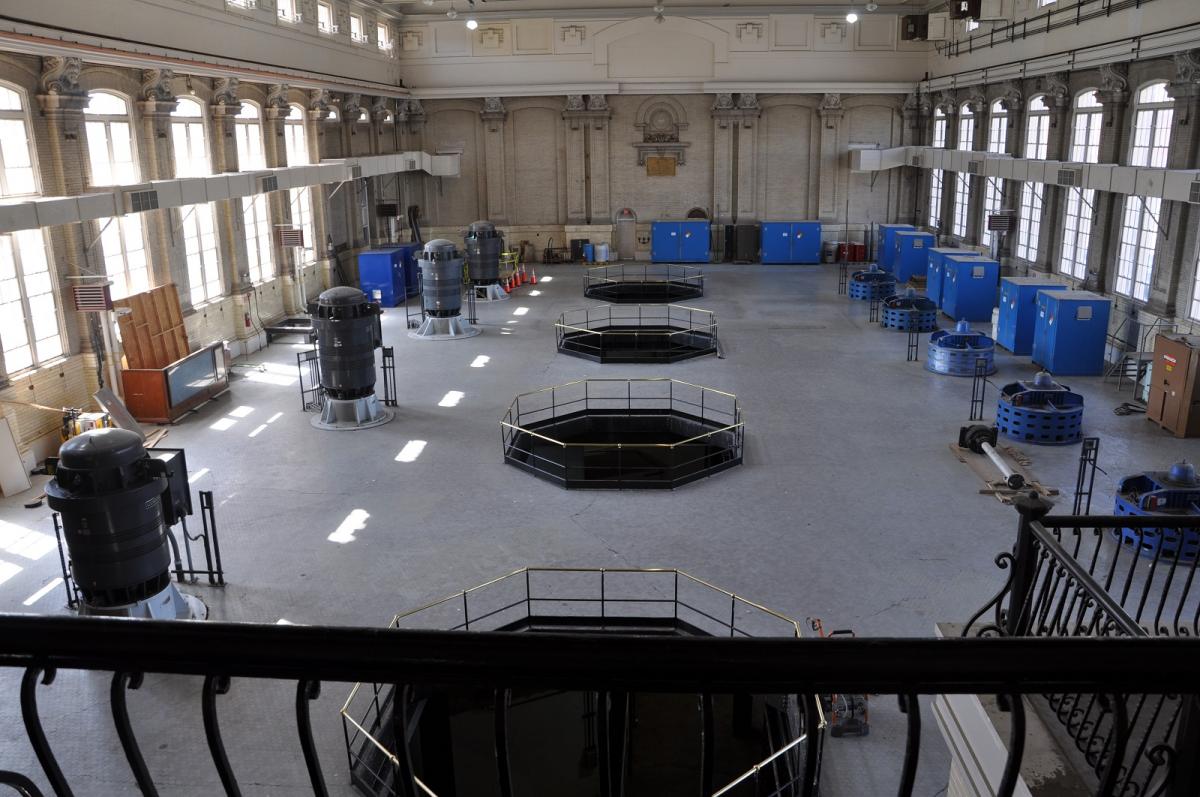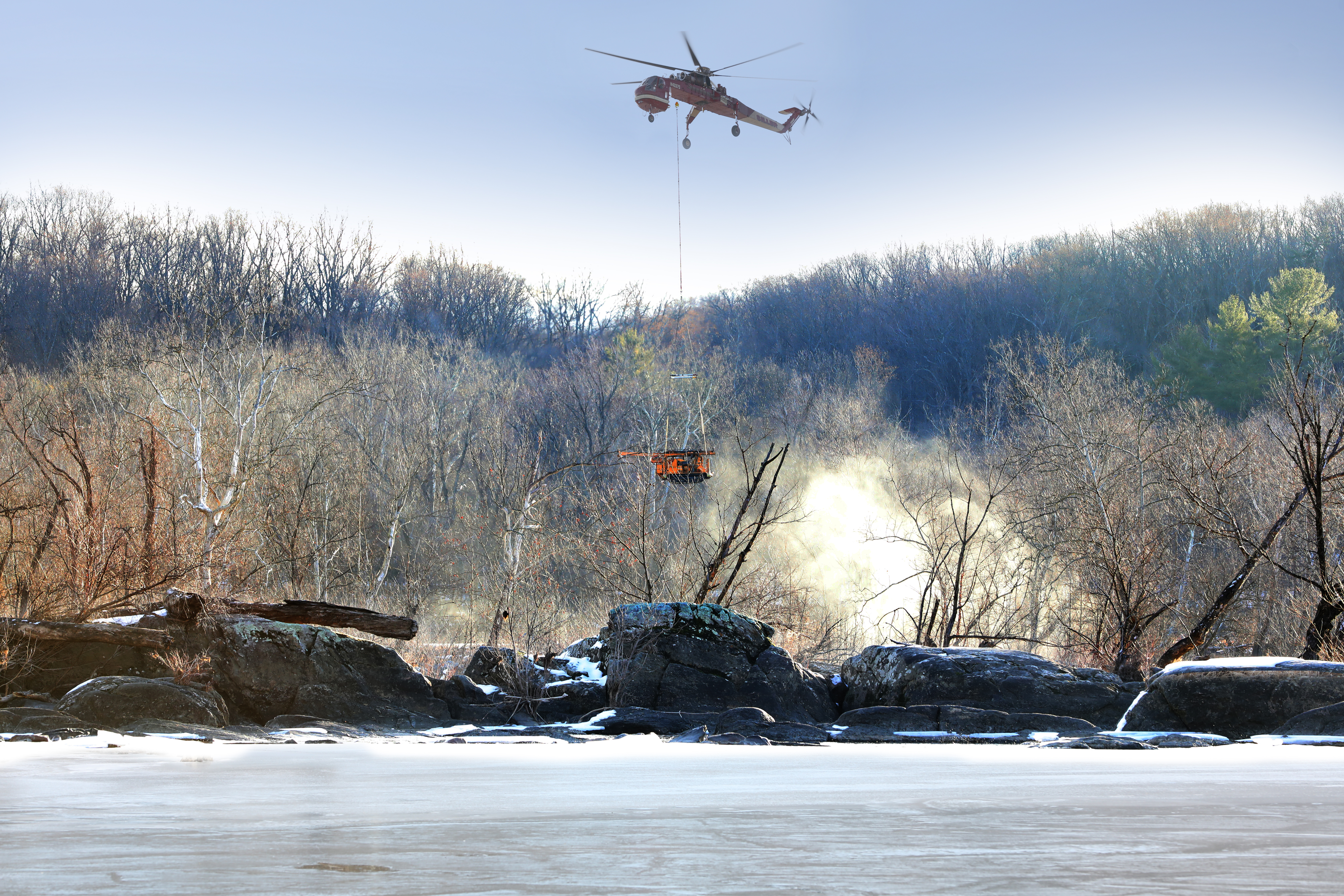
Sanitary Sewer Pipes
DC Water's sanitary sewer system includes over 1800 miles of pipes- large interceptor sewers, smaller gravity collection sewers, sewer lateral connections and the 50-mile Potomac Interceptor System which carries wastewater from areas in Virginia and Maryland to Blue Plains.
The existing sewer system in the District dates back to 1810, and includes a variety of materials such as brick and concrete, vitrified clay, reinforced concrete, ductile iron, plastic, steel, brick, cast iron, cast-in-place concrete and even fiberglass.
Pumping Stations
The sewer system is intended to work by gravity, which means it is designed so that wastewater flows downhill from the source to the treatment plant. Sometimes, the shape of the land makes it necessary to lift the water from a low point to a higher point using electric pumps. From there, gravity can again take over and continue the flow toward the plant. DC Water also has storm pumping stations that collect rainwater from roadways and surrounding drainage areas and convey flow to the nearest river or stream.
DC Water has sixteen storm pumping stations and nine sanitary and combined sewer pumping stations and one swirl facility. These pumping stations keep wastewater flowing to the treatment plant and prevent overflows in buildings, streets and waterways. Storm pumping stations prevent street flooding during times of heavy rain.

Main Pumping Station
The eight sewer pumping stations are:
- Main Pumping Station
- O Street Pumping Station
- Potomac Pumping Station
- East Side Pumping Station
- Rock Creek Pumping Station
- Upper Anacostia Pumping Station
- Poplar Point Pumping Station
- Earl Place Pumping Station
- 3rd & Const. Pumping Station


